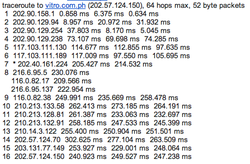Questions and Concerns About the eUP Project
This community page is created and occasionally revised on "best effort basis" to help advance the University's interest and the goal of operational excellence via the eUP Project. UP constituents with UP Webmail accounts can directly modify this page. Special access can be requested (via Helpdesk) by UP constituents who don't have UP Webmail accounts. UP constituents may also post their concerns via social media (see instruction below).
Page shortcut: goo.gl/UK2Cy
What is eUP?
- audio: "eUP: Anong meron dito?" from the Sciencia na Kayo DZUP radio Program, 21 Sept 2012
Transparency
- Was it consultation or information drive?
- Who were those consulted?
- How did UP come up with the Terms of Reference? What was the process like? Any documentation?
Accountability
- Spending priorities of UP
- Best use of tax payers' money?
- Project design and planning
- Why Peoplesoft?
- Implementation
- Evaluation
Sustainability
Budget
- Continuity of project. From which unit will the MOOE come from after the project has concluded/closed?
eUP Team's Response
Software License
- Will UP be entitled to future upgrades of the Oracle software? While reportedly license to such software is "in perpetuity," it is only limited to the version bought by the University. Such arrangement is vulnerable to obsolescence, not unlike a situation where you might have bought Windows 95 but can no longer upgrade it without buying new versions to keep up with needs and available hardware. This translates to additional tens of millions cost for the University down the line.
Technical Details
Headings: Network, Data Migration, Authentication, Customization, Maintenance
Network
- Latency. eUP servers will be hosted by PLDT's Vitro Data Center. UP networks are on PREGINET. They are wide apart in terms of the routes they'd take to reach each other. The same holds with connections between PLDT and other providers. See traceroutes below. This is an issue when it comes to UP's access to its own data. It can mean slow connections for users. User authentication is also potentially problematic due to delays.
Of course, the eUP Team can opt to use PREGINET IP (Internet Protocol) addresses and treat Vitro Data Center as an extension of PREGINET network. This remains problematic for UP users outside of the physical UP infrastructure even if they use Smart Bro, a PLDT product, to access UP online services. The routing for these users still goes out of the country rather than directly (which is the case if there is true peering between internet service providers (ISP)).
eUP Team's Response
Use of Non-UP Cloud Computing Infrastructure
Data Migration
eUP Team's Response:
Authentication
- Authentication Authorities. Authenticating centrally or by CU?
eUP Team's Response:
Customization
Maintenance
Student Academic Information System (SAIS)
Human Resource Information System (HRIS)
Financial Management Information System (FMIS)
Supplies, Procurement and Campus Management Information System (SPCMIS)
Miscellaneous Concerns
"Best Practice"
- Oracle as best practice in top universities. The claim that Oracle software is "best practice" in most top universities worldwide remains largely unverified by 3rd parties or such practice doesn't appear to have been subjected to scholarly peer-reviewed evaluation. Exactly which Oracle systems are used in these universities? What are the relevant respects in such reported deployment elsewhere to UP? How did they contend with issues of migration, with challenges in dealing with legacy systems earlier developed by such institutions? What makes a university "world class"? Is it the Oracle software?
Social Media
Other discussions may be posted via Facebook and Twitter.
- Twitter: please post with hashtag #eUPWatch
- Facebook: visit and like!
References
- Ronald S Banzon, 2012. "EUP Implementation in UPD: Concerns" (presentation)
- Isabella Patricia H. Borlaza, 2012. "System reboot: Decoding the issues behind the techy façade of eUP." Philippine Collegian
- Vincent Cabreza, "With e-project, UP sees bigger investments" (PDI, 25 Sept 2012)
- "Questions and Concerns About the eUP Project" (a compilation of questions and concerns from the different UPD units; publicly distributed at the eUP Kickoff in UPD, 6 Aug 2012)
SAIS-Related
- OUR, "How does the OUR Operate at Present?" (presentation)
See Also
- Terms of Reference for the Procurement of Products and Services for Key Components of the eUP Project of the University of the Philippines
- Procurement of Products and Services for key Components of the eUP Project
- Issues in cloud computing and storage
- UP's Strategic Plan 2011-2017
- eUP's Facebook Page





